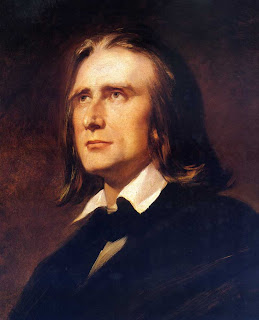Liszt's Symphonic Poem No. 6 was inspired by the legend of Ivan Mazeppa, who was born in Lithuania in 1639. He was of noble birth, and as the legend goes he had a love affair with a Polish princess who was married to a much older man. When the husband found out about the affair as punishment he had Mazeppa stripped of his clothes and tied to a horse and set free to run in the wilderness. The horse ended up in Ukraine, Mazeppa survived the ordeal, and was found by Cossasks, who eventually made him their Hetman, the person of highest military rank in the country.
Although just a legend, it inspired many Romantic era writers, painters and musicians. Lord Byron, Alexander Pushkin and Victor Hugo wrote poems about it, Liszt and Tchaikovsky wrote music based on it, and there are many paintings inspired by it.
Liszt first wrote a piano piece based on the legend, part of his set of Transcendental Etudes , first published in 1837 then revised with the revisions printed in 1852. Mazeppa is the 4th Etude in the set and remains one of the most technically difficult pieces in the repertoire for piano. Liszt's orchestral version differs from the piano version as it is longer and expands on some of the musical ideas of the original.
The poem has musical representations of the ride through the wilderness, the beating of the horses hoofs, the terror of the rider and after Mazeppa is found by the Cossacks a triumphant military march.
Mazeppa by Franz Liszt, followed by a performance of the original piano piece:








